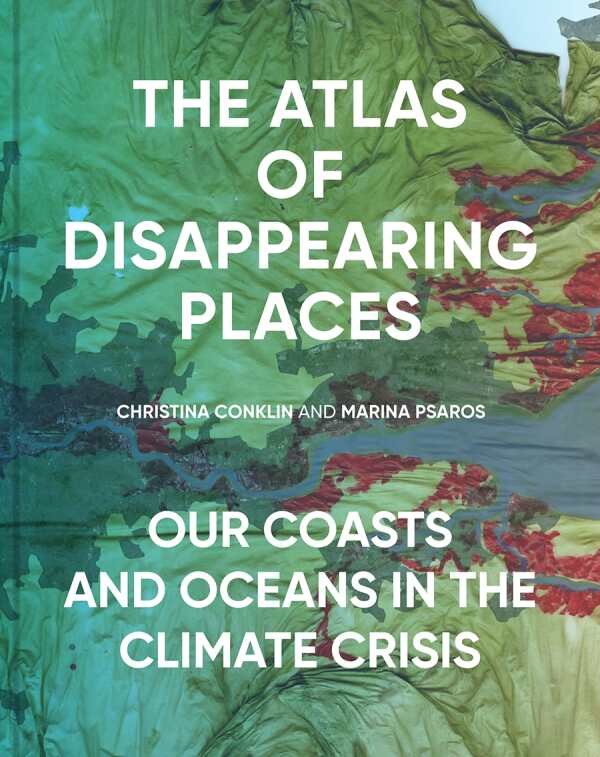The Atlas of Disappearing Places
Our Coasts and Oceans in the Climate Crisis
The Atlas of Disappearing Places is a virtual tour of coastal regions that are vulnerable to climate change. “We come from the sea,” it contends, so protecting the sea is a collective responsibility.
Acidification, declining fish populations, and plastic pollution have put the oceans in a poor state. And from New York City to Shanghai, metropolises are threatened by rising sea levels—a gradual hazard, as opposed to “‘fast’ emergencies,” like the hurricanes that ravage Houston and Puerto Rico. Meanwhile, construction increases CO2 levels and threatens wetland habitats.
The book’s speculative vignettes are positioned in 2050, showing what might change per high-end Intergovernmental Panel on Climate Change predictions, and what preventative or adaptive measures might be taken. The metaphor of the ocean as a body that’s suffering from chronic inflammation and trauma is effective. Statistics and expert quotes are used to lend support to the book’s models without overwhelming its storytelling.
Painted with water-soluble inks on sheets of dried seaweed, the book’s maps are textured, attractive, and informative. They complement its suggestions for practical ways to reduce climate impact, like cutting single-use plastics, eating less meat, and getting involved in environmental advocacy. “What we do, and when, matters,” the book insists. Climate change is not just about melting ice caps and starving polar bears, and The Atlas of Disappearing Places brings that reality home.
Reviewed by
Rebecca Foster
Disclosure: This article is not an endorsement, but a review. The publisher of this book provided free copies of the book to have their book reviewed by a professional reviewer. No fee was paid by the publisher for this review. Foreword Reviews only recommends books that we love. Foreword Magazine, Inc. is disclosing this in accordance with the Federal Trade Commission’s 16 CFR, Part 255.

